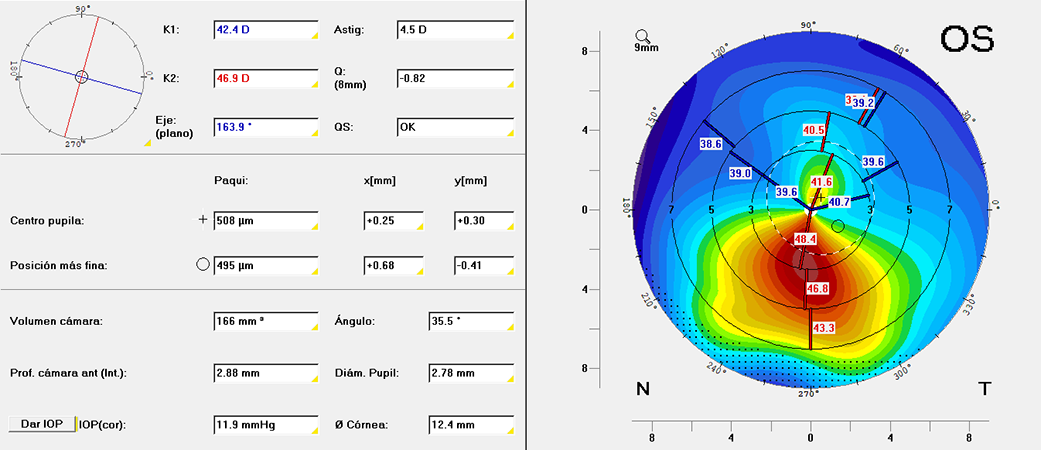Keratometry measures the radius of curvature of the cornea to determine the value of corneal astigmatism. This is the most significant type of astigmatism, but not the only one, as there is also astigmatism of the posterior corneal surface and of the anterior and posterior surfaces of the lens, which in many cases is minimal. Astigmatism is the most common ametropia.
Automatic keratometers are the most commonly used devices.
In most normal corneas, keratometry is sufficiently accurate to fit contact lenses or calculate the power of intraocular lenses (IOLs). Keratometry is also useful for detecting irregular astigmatism, where keratometric images cannot be superimposed or do not form regular ovals. However, in certain situations, such as keratoconus, corneal ectasia following radial keratotomy, or ocular surface abnormalities, the optical properties of the cornea are affected in areas different from those measured by keratometry; therefore, the diagnosis should be complemented with more specific ophthalmological tests.


